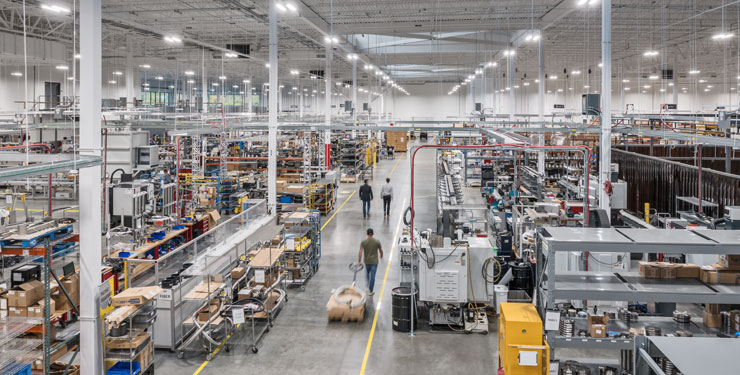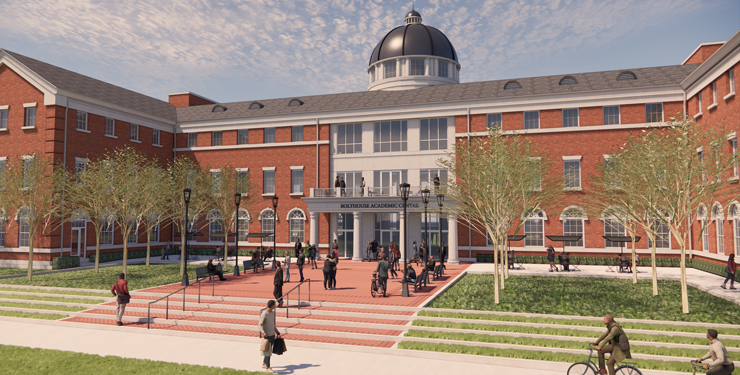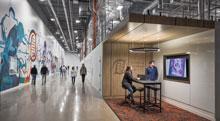
Healthy Buildings Are More Important Than Ever
As the coronavirus pandemic rages, smart updates and thoughtful safety measures focused on health and wellness will be needed to help people feel good about returning to work.
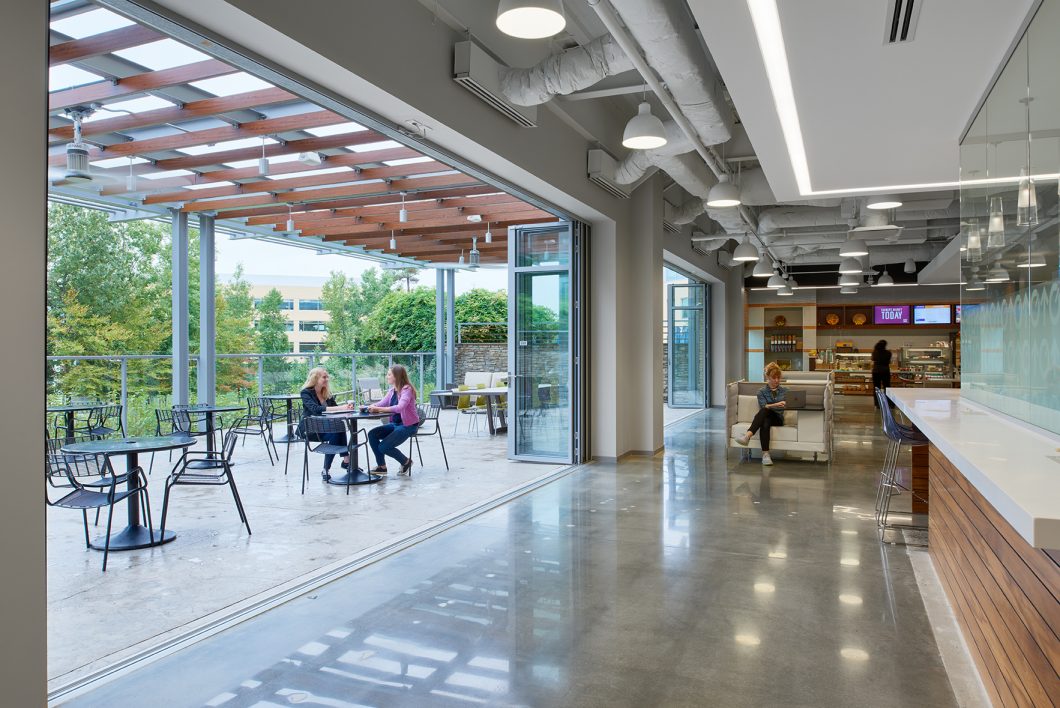
Combined indoor and outdoor space can promote occupant happiness and productivity.
The healthy building movement has changed the way facility managers evaluate their buildings, but the coronavirus pandemic is bound to change it even more. As people return to their office buildings, there will be new concerns about safety and sanitizing. Complicating matters, it could be challenging to draw people back to the workplace after the convenience of working at home, where the dress code is always “casual.”
Most facility managers have long since expanded their evaluation checklists to include features like indoor greenery and water bottle filling stations, along with inspections of the HVAC systems and lighting fixtures. Now, it becomes even more important to take a thoughtful approach to well-being concerns. It’s a good time to retool those building checklists and evaluations to make sure facilities are not just operating efficiently, but also helping people feel safe, welcome and healthy, especially as they return to work.
Build on current practices
Ideally, the effort to enhance health and well-being will not be something that’s brand new. Rather, it’s another layer added to what’s already being done to keep the facility humming—an evaluation process that’s ongoing daily, weekly, monthly and annually.
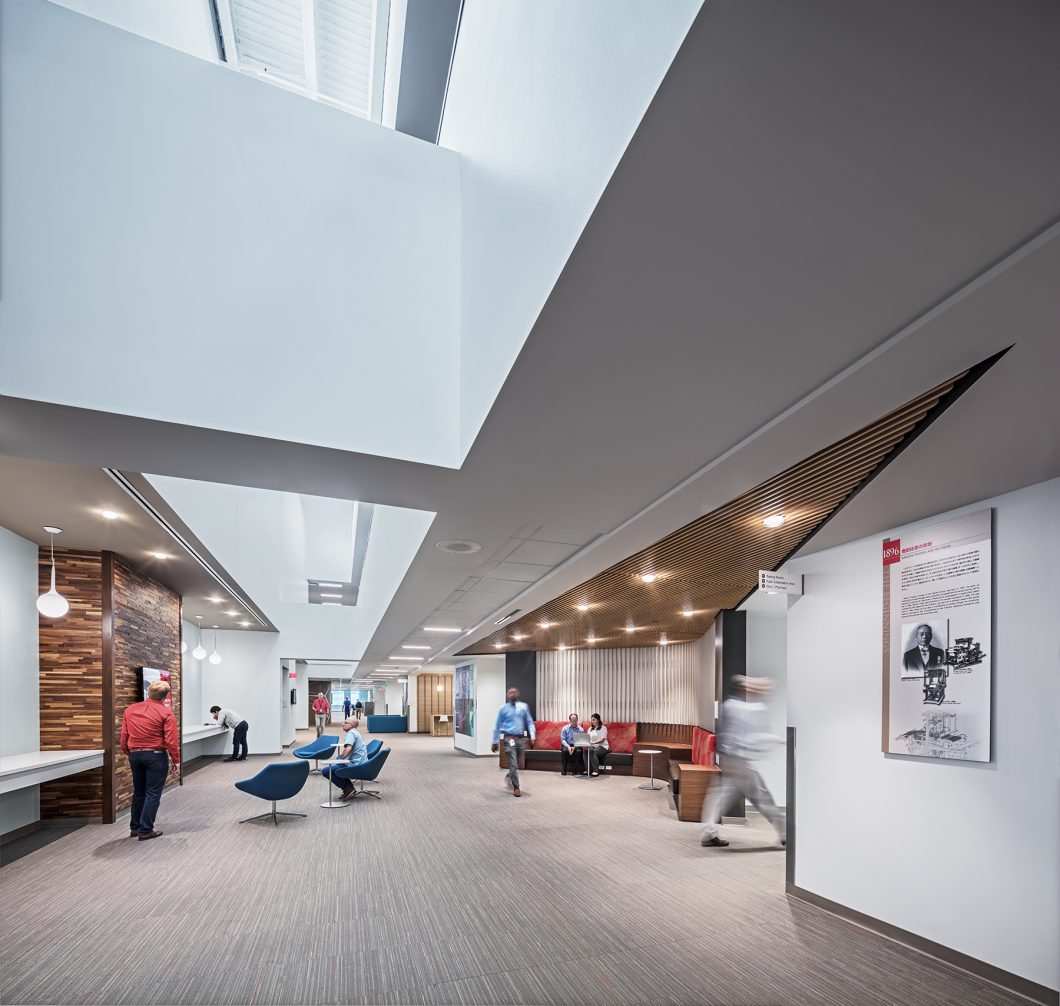
For example, there are regular inspections for wear and tear on internal areas that are heavily used, such as entrances, dining spaces and common meeting areas. There’s similar scrutiny of external areas, such as loading docks and sidewalks. It’s understood that a well-maintained facility matters to everyone who walks the halls, occupies a workspace or visits the building to attend a meeting.
In addition to aesthetic impressions of the facility, issues related to sustainability and well-being have become increasingly important to corporate tenants as well as to employees. Therefore, such issues also have become more important to facility managers; they are expected to have expertise on the more psychological as well as the practical aspects of the buildings they oversee.
Not surprisingly, heightened concerns about buildings’ health-related features in the wake of the worst pandemic in recent memory exist. Naturally, people will be wary. There also will be greater awareness that the maintenance of unseen systems such as ventilation and cleaning protocols could be just as vital for safety as, say, a leaking ceiling or a crack in a sidewalk.
Certification programs
A good way to enhance evaluations of a facility is by using one or more third-party certification programs, such as LEED, Fitwel or WELL. LEED is a global platform, whose certification emphasizes building efficiency and sustainability. The U.S. Green Building Council promotes its LEED certification as a competitive edge as well as a selling point for prospective tenants.
Fitwel is another widely used certification program in the healthy building movement, emphasizing health-promoting design. The Centers for Disease Control and Prevention (CDC) is a research and evaluation partner for Fitwel.
WELL Certification also offers a detailed framework for building projects that promote health and wellbeing. The Green Business Certification Incorporation, GBCI, which certifies the WELL Building Standard, also administers the LEED rating system, and WELL and LEED are complementary, not competitive.
WELL building guidelines
Here’s a closer look at the WELL building standards, which have a focus on the health and well-being of building occupants. They draw on medical research, detailing numerous points that fit into a facility management audit. Consider some of these main target areas:
HVAC practices. This is likely to be top-of-mind as people return to their office buildings once the coronavirus crisis eases. Indoor air quality can have major effects on people’s productivity, alertness and absenteeism. The Environmental Protection Agency links indoor air pollution to a number of serious diseases, including asthma. A regular cleaning and replacement strategy for all systems and filters, along with evaluation of the outdoor air intake, will help to maintain optimal air quality.
Cleaning protocols. Consider a transition to products with safer ingredients. Most commercial cleaners contain harmful chemicals that can be hazardous to the cleaning staff as well as other building occupants. A focus on proper training and cleaning schedules will also be top of mind for employees returning to the office environment.
Drinking water quality. This amenity is important to employers because it is important to their employees. As companies have encouraged the use of reusable water bottles, they’ve also started offering bottle filling stations and ice/water dispensers. Regular cleaning and filter maintenance of this equipment are needed to ensure that drinking water is not only accessible, but of the highest quality.
Smoking bans. Restrictions in buildings have helped to improve Americans’ health, according to the CDC. Many corporate companies have enacted full smoking bans for their buildings and campuses. Facilities that do allow for smoking locations should position them well away from building entry points, to keep smoke out of the facility and safeguard people from having to walk through them.
Pest management practices. These can be improved with an emphasis on low-hazard pesticides. The integrated pest management approach aims to balance monitoring, prevention and control efforts to limit harmful effects on people.
Recycling programs. Standard in some facilities, more controversial in others, recycling programs are another way to promote more sustainable practices in our throw-away society. Some facilities might even be able to include composting collection points, recycling food waste for practical purposes such as landscaping.
Also, worth noting is the WELL Building Core & Shell certification, an approach that might be particularly useful to some facility teams. The program’s emphasis is on base building design and operation. It is similar to the LEED certification process; in that it aims to offer incentives for all a building’s tenants to adopt a health and well-being emphasis for their independent spaces.
Encouraging healthy behaviors
While it’s vital to evaluate building systems that have a short-term, direct impact on health. It’s also good to take the long view. Over time, certain enhancements can not only promote healthful behaviors, but inspire positive feelings about people’s surroundings.
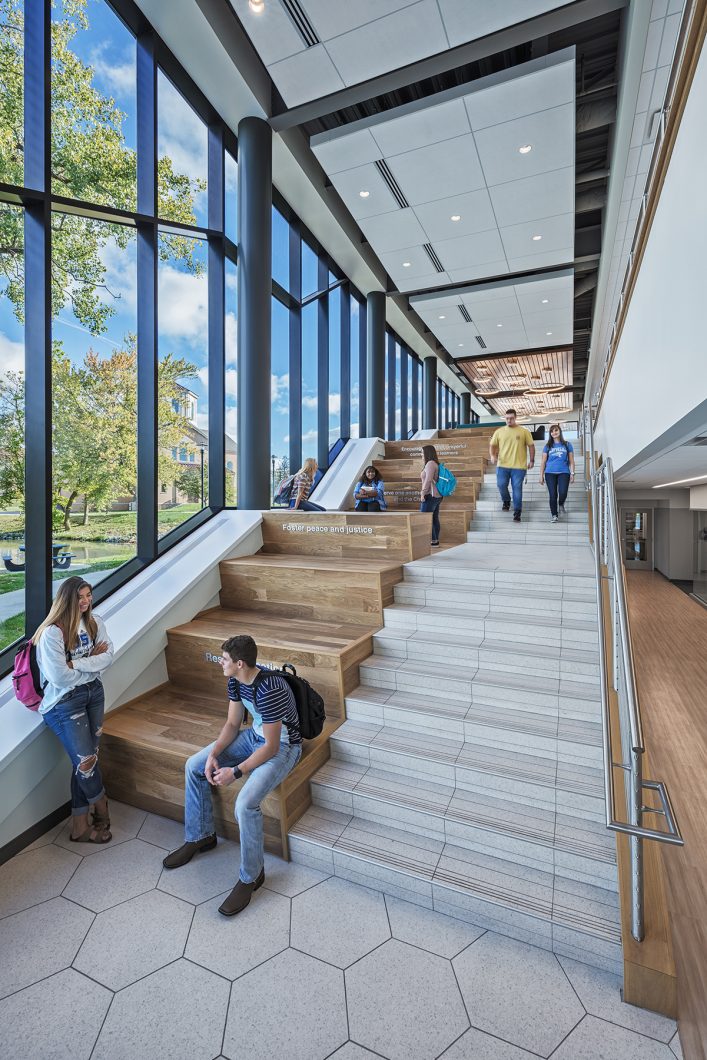
These are not esoteric concerns, but measures with real, bottom-line impact. WELL standards and other green building initiatives have been shown to boost productivity, reduce health care costs and help attract and retain employees. In turn, keeping current employees rather than having to hire and train new ones has a positive impact on an organization’s ROI. According to the Center for American Progress, replacing a single employee may cost an organization up to 30 percent of that person’s annual salary.
Research shows that indoor environments can promote happiness and productivity through things like lighting, greenery, outdoor access and window placement. Other enhancements can promote wellness by encouraging fitness. These include:
- Features such as walking trails encourage people to get outside for exercise and fresh air.
- More open, inviting and accessible stairways can prompt people to take more steps during the workday.
- On-site fitness centers make it easy and convenient for people to use a treadmill, work out with weights or perhaps take a stress-reducing yoga class.
Upgraded amenities could be a valuable tool to welcome people back to buildings that were emptied out by the pandemic — especially those employees who have rather enjoyed cocooning at home. Again, these measures can have significant impact as strategies to shore up engagement by offering people tangible quality-of-life features. Consider these possibilities:
- Well-planned gathering places that encourage interaction and camaraderie, albeit with timely “social distancing” considerations, when appropriate.
- Décor that nods to the trend of less institutional, more homelike surroundings. This could include creative use of finishes, spots that offer quiet and privacy, and places where with seating choices allowing the user to adapt their posture, such as couches rather than the standard office chairs.
- Spaces that demonstrate openness to a more agile workplace. These might include locations where people who work from home part of the time can come in, set up their computers and interact with their fulltime on-site colleagues.
Role of communications
Amid the nuts-and-bolts concerns, system audits and checklists, don’t overlook the need for communications. Post-pandemic, they will become more important than it has been in the past. Facilities managers will need to educate people about the health and well-being strategies that are being enacted and how these measures contribute to a more efficient workplace that’s also more healthful for them. Communications should explain the efforts to safeguard people’s security and safety, and hopefully will inspire confidence and peace of mind.
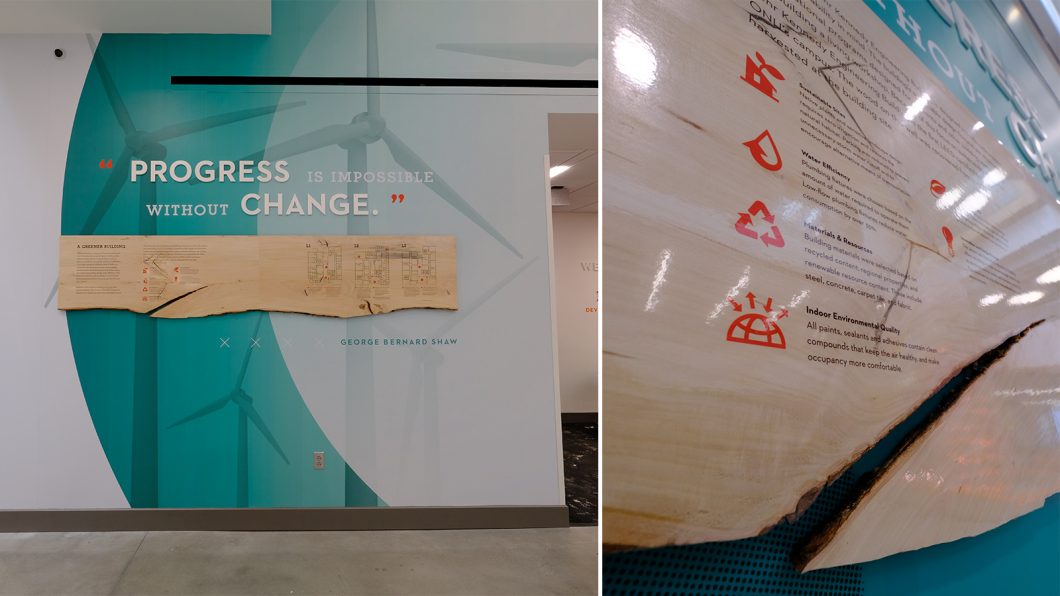
Communications can include emails, text messages and signage, including digital signs. If possible, it also can be helpful to provide FAQs and a way for tenants and employees to have their questions and concerns addressed. Communications efforts should make use of data, when available, to back up explanations about what’s being done and why. This will help keep people informed, engaged and reassured.
Vital role of facility managers
The healthy building trend is bound to accelerate and deepen as people return to buildings that they hope are safe and healthy. Facility managers can play a vital role by updating the way they evaluate their buildings — including enacting additional safety measures and sharing information with tenants and employees.
Sustainability and well-being are increasingly integral to how people think about what a building should be. Through careful evaluation and thoughtful updates, the buildings where so many people spend so much of their time can be better places in which people live, work and learn.
This article was originally published at Facilitiesnet.

